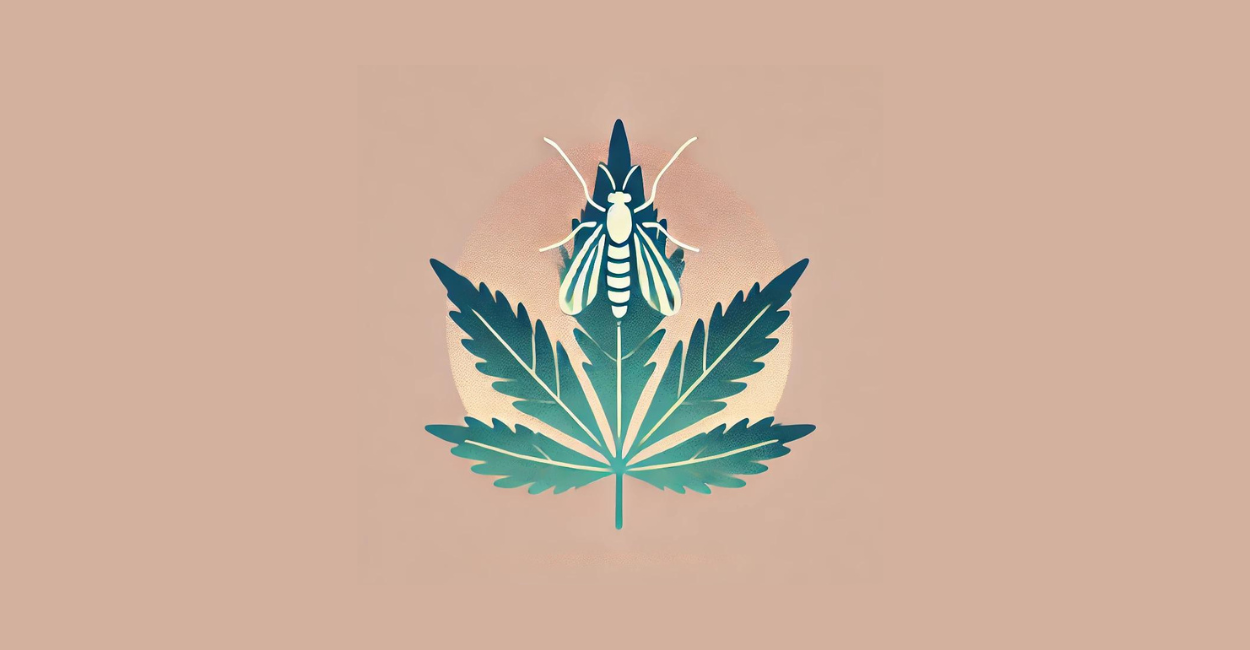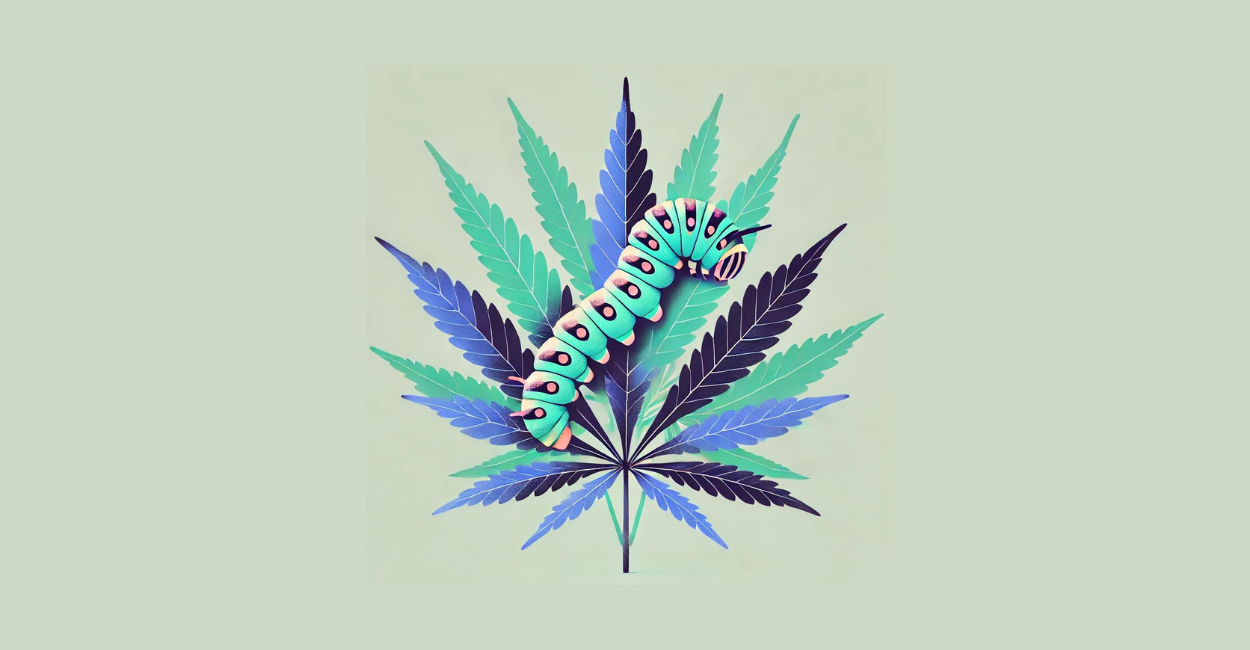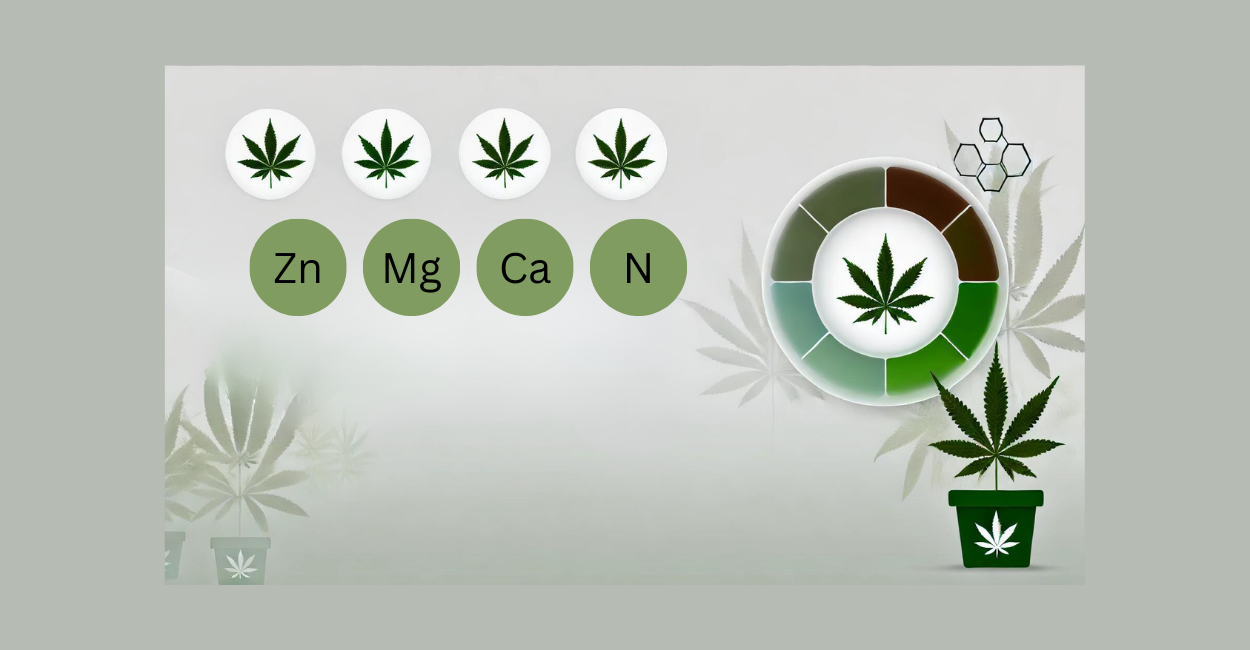Reading time: approximately 6-7 minutes
Welcome to our ultimate guide on "Identifying and Treating Cannabis Diseases and Pests". These sneaky threats might seem minor, but they can turn your healthy plants into a mess faster than you can say "crop failure." In this guide, we'll help you spot those elusive issues, understand their impact, and share effective strategies to safeguard your plants from these hidden invaders. Get ready to fortify your garden and let your cannabis thrive like never before!
What are Cannabis Pests and Diseases?
Cannabis pests and cannabis diseases are common issues that can affect the growth, health, and yield of your plants. Pests like aphids, spider mites, thrips, whiteflies, scale insects, and mealybugs can suck the sap from leaves and cause significant damage. Diseases like bud rot, root rot, and powdery mildew can also destroy large parts of the crop if not detected and treated in time. Our extensive experience in indoor growing and outdoor growing has shown that early detection and targeted measures are crucial to prevent these problems and ensure the health of your plants.
Common Cannabis Pests and Their Control
Aphids

Aphids are tiny, soft-bodied insects that suck plant sap from leaves and excrete honeydew, which can lead to mold. These pests are particularly problematic in both indoor and outdoor grows, as they can quickly form large populations.
- Damage: Discoloration, leaf deformation, stunted growth, sooty mold
- Control: Neem oil, insecticidal soap, ladybugs, lacewings
For more details on aphids and how to effectively combat them, read our comprehensive article: Combatting Aphids on Cannabis.
Spider Mites

Spider mites are tiny pests that leave fine webs on leaves and cause yellow spots. They are problematic in both indoor and outdoor grows.
- Damage: Yellow spots, discoloration, stunted growth
- Control: Predatory mites, UVB supplemental lights, diatomaceous earth
Learn more about controlling spider mites in our detailed article: Eliminating Spider Mites on Cannabis.
Thrips (Thysanoptera)

Thrips are small, slender insects that suck sap from leaves and leave silver streaks. They are a serious problem in both indoor and outdoor grows. Thrips not only cause physical damage but can also transmit viruses that further weaken the plants.
- Damage: Silver streaks, virus transmission
- Control: Lacewings, neem oil, diatomaceous earth
For more information on thrips and their control, visit our detailed article: Treating Thrips on Cannabis.
Whiteflies (Aleyrodidae)

These tiny flies suck plant sap and leave honeydew, which encourages mold growth. They are especially troublesome in indoor grows and can cause significant damage if not controlled early.
- Damage: Honeydew, mold formation
- Control: Insecticidal soap, lacewings, air circulation
Learn more about whiteflies and how to control them in our specialized article: Eliminating Whiteflies on Cannabis.
Fungus Gnats

Fungus gnats are small, dark insects whose larvae can damage plant roots. They are particularly problematic in moist conditions often found in indoor grows.
- Damage: Root damage
- Control: Yellow sticky traps, drainage, nematodes
For more details on controlling fungus gnats, read our comprehensive article: Combatting Fungus Gnats on Cannabis.
Leaf Miners (Liriomyza spp.)

Leaf miners lay their eggs in leaves, and the larvae create tunnels through the plant tissue, significantly affecting photosynthesis. This damage is especially problematic in indoor grows, where plants are concentrated in a limited space.
- Damage: Leaf tunnels, reduced photosynthesis
- Control: Remove affected leaves, yellow sticky traps, plant hygiene
Learn more about leaf miners and their control in our detailed article: Controlling Leaf Miners on Cannabis.
Scale Insects

Scale insects are small bugs that attach themselves to plant stems and suck sap. These pests can significantly weaken the plants and are particularly persistent in indoor grows.
- Damage: Weakened plants, stunted growth
- Control: Neem oil, insecticidal soap, regular inspections
For more information on controlling scale insects, read our specialized article: Controlling Scale Insects on Cannabis.
Mealybugs

Mealybugs, also known as woolly aphids, are small insects that excrete a waxy substance and suck plant sap. These pests can cause significant damage and produce honeydew, which encourages mold growth.
- Damage: Honeydew, mold formation
- Control: Neem oil, insecticidal soap, ladybugs
Learn more about controlling mealybugs in our comprehensive article: Eliminating Mealybugs on Cannabis.
Snails and Slugs

Snails and slugs are voracious pests that leave slime trails and holes in leaves. They are particularly problematic in outdoor grows and can destroy entire plants in severe infestations. These pests are mainly nocturnal and hide under plant debris or in moist soil during the day.
- Damage: Slime trails, holes in leaves
- Control: Handpicking, snail bait, copper tape
For more details on controlling snails and slugs, read our comprehensive article: Controlling Snails on Cannabis.
Caterpillars

Caterpillars are voracious pests that can eat both leaves and flowers. They are difficult to spot as they camouflage well and often hide inside the plants. Severe infestations can cause significant damage and greatly affect the yield.
- Damage: Eaten leaves and flowers
- Control: Handpicking, biological insecticides, natural predators
Learn more about controlling caterpillars in our comprehensive article: Eliminating Caterpillars on Cannabis.
Leafhoppers (Cicadellidae)

Leafhoppers are sap-sucking insects that can transmit viruses that harm plants. They cause leaf discoloration and can stunt plant growth. A large infestation can severely weaken plants.
- Damage: Leaf discoloration, stunted growth
- Control: Neem oil, insecticidal soap, natural predators
For detailed information on controlling leafhoppers, read our specialized article: Controlling Leafhoppers on Cannabis.
Grasshoppers (Acrididae)

Grasshoppers eat large amounts of plant material and can cause significant damage. They are particularly problematic in outdoor grows and can destroy entire fields in severe infestations.
- Damage: Eaten leaves, stunted growth
- Control: Nets, natural predators, biological insecticides
Learn more about controlling grasshoppers in our comprehensive article: Controlling Grasshoppers on Cannabis.
Common Cannabis Diseases and Their Treatment
Bud Rot

Bud rot is caused by fungi and leads to rotting flowers. This disease can spread quickly and destroy large parts of the crop if not detected early.
- Damage: Rotting flowers
- Treatment: Resistant strains, air circulation, remove affected flowers
Learn more about bud rot and its treatment in our specialized article: Treating Bud Rot on Cannabis.
Root Rot

Root rot is caused by excessive moisture and leads to rotting roots. This disease can kill the plant if not treated promptly.
- Damage: Rotting roots
- Treatment: Proper pH, good drainage, avoid overwatering
For more details on treating root rot, read our comprehensive article: Treating Root Rot on Cannabis.
Powdery Mildew

Powdery mildew is a fungal infection that appears as white, powdery spots on leaves. It can spread quickly and severely affect the health of the plants.
- Damage: White, powdery spots on leaves
- Treatment: Neem oil, specialized fungicides, reduce humidity, remove infected leaves
Learn more about controlling powdery mildew in our comprehensive article: Treating Powdery Mildew on Cannabis.
Nutrient Deficiencies in Cannabis Plants

Nutrient deficiencies occur when cannabis plants do not receive enough essential nutrients. Typical symptoms include discoloration, stunted growth, and low yields. These issues can be caused by a lack of nitrogen, phosphorus, potassium, or other micronutrients.
- Damage: Discoloration, stunted growth, low yields
- Treatment: Check nutrient program, add specific nutrients, monitor pH levels
For more information and suitable products to address nutrient deficiencies, visit our article on Nutrient Deficiencies in Cannabis Plants.
Prevention and Natural Control Methods
Preventing pests and diseases is crucial for successful cannabis cultivation. Regular plant inspections, balanced nutrient supply, and introducing natural predators can help keep pests at bay. The use of neem oil and insecticidal soap can also be effective. It is important to monitor plant health and take early action in pest control.
Beneficial Insects and Mold Prevention in Cannabis Cultivation:
Beneficial insects play an essential role in biological plant protection and are an effective method for controlling pests in cannabis cultivation. By using ladybugs, lacewings, and predatory mites, pests like aphids, spider mites, and thrips can be naturally controlled without chemical pesticides. This promotes both plant health and environmental friendliness. Learn more about the use of beneficial insects and their benefits in our detailed article. ➜ Insects & Beneficials in Cannabis Cultivation
Important Note:
Preventing mold in cannabis plants is crucial for their health and productivity. Mold can spread quickly and ruin the harvest. Ensure that the humidity in your grow room is always optimal and provide good ventilation. Regularly monitor your plants for signs of mold and act immediately if you find any. For more information and suitable products for mold prevention and control, visit our article on Mold in Cannabis.
Cannabis Strains for Germany:
Various cannabis strains are suitable for cultivation in Germany, being both mold-resistant and capable of withstanding cold climates. "Northern Lights" is an excellent choice known for its resistance to mold. "White Widow" is another popular strain that copes well with colder temperatures and also has high mold resistance. For outdoor growers in colder regions, "Frisian Dew" is ideal as it is specifically bred for the cool, northern European climate. These strains offer robust and productive options for growers of all levels. ➜ Best Cannabis Strains for Cultivation in Germany
Proper care and monitoring of cannabis plants are essential for effectively combating diseases and pests and achieving high yields. By detecting and treating infestations and plant diseases early and optimizing growing conditions, you can ensure that your plants reach their full potential. Use available resources and tools to improve your cannabis cultivation skills and achieve successful harvests. For more information and tips on pest and disease control and prevention, check out our detailed articles.
Disclaimer
This website's content is for informational use only and should not be considered medical or legal advice. Always consult a healthcare professional for health-related issues. Be aware of local regulations regarding cannabis cultivation. We are not liable for any actions taken based on this information.

